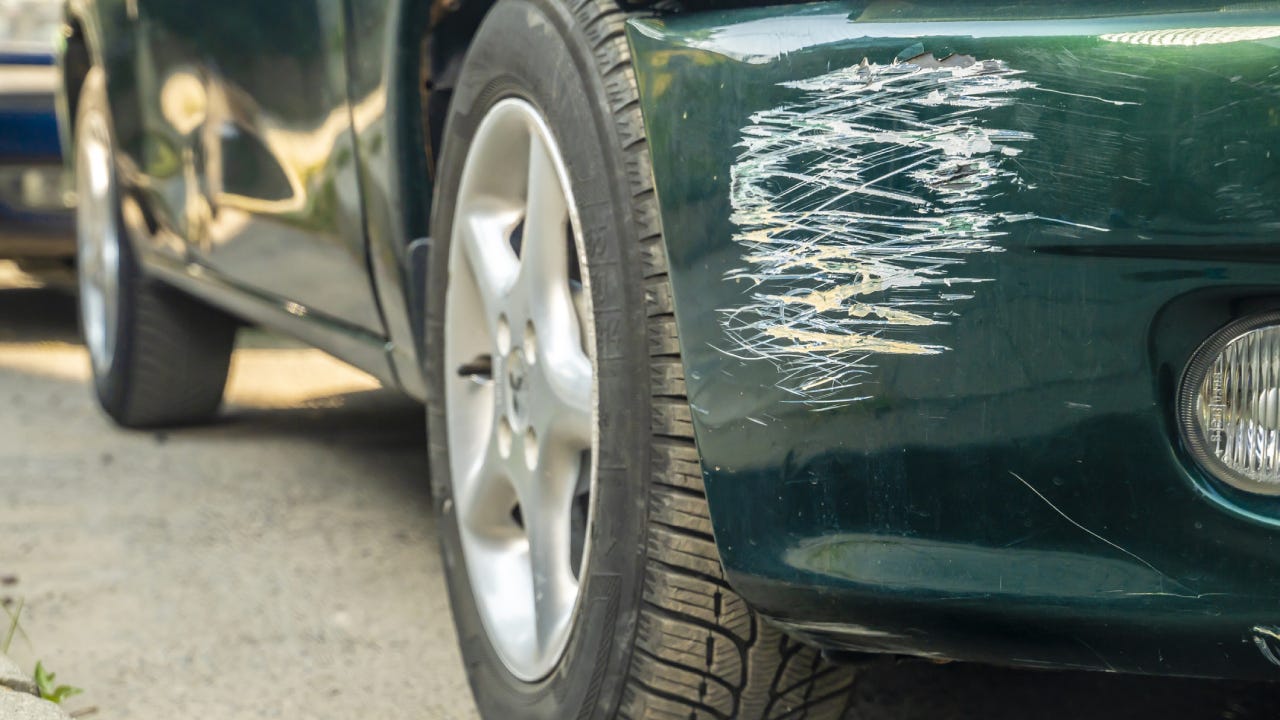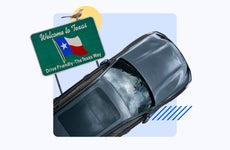Car insurance after a hit-and-run in Texas

The Bankrate promise
At Bankrate, we strive to help you make smarter financial decisions. To help readers understand how insurance affects their finances, we have licensed insurance professionals on staff who have spent a combined 47 years in the auto, home and life insurance industries. While we adhere to strict , this post may contain references to products from our partners. Here's an explanation of . Our content is backed by Coverage.com, LLC, a licensed entity (NPN: 19966249). For more information, please see our .
Our writers and editors used an in-house natural language generation platform to assist with portions of this article, allowing them to focus on adding information that is uniquely helpful. The article was reviewed, fact-checked and edited by our editorial staff prior to publication.
Hit-and-runs in Texas
Experiencing a hit-and-run incident can be truly unnerving, more so when it leads to injuries or substantial damage to your automobile. If you find yourself in a situation where the other motorist flees the scene, knowing the most appropriate next steps can be instrumental in maintaining your composure and ensuring that you and any other passengers remain safe.
Depending on its specifics and the particulars of the accident, your auto insurance policy may provide you with coverage for the damage incurred from a hit-and-run.
Hit-and-run laws in Texas
Texas car insurance laws outline in great detail what is expected from drivers after they are involved in a collision. Under Texas Transportation Code Chapter 550, drivers in Texas who are part of a car accident involving injury or death are required to:
- Stop at the scene
- Return to the scene immediately if you were unable to stop
- Determine if a person is involved in the collision and if they need aid
- Offer aid and remain at the scene until assistance arrives
- Share their contact details
If a driver doesn’t comply with these rules, they could be charged with a hit-and-run. The severity of the penalty will depend on how serious the accident was. The charges can range from a simple misdemeanor to a serious felony. Monetary fines could reach up to $5,000, and the offender could face imprisonment ranging from a couple of months to as long as 10 years. You may also face license or vehicle registration suspension, depending on the severity of the incident. It’s crucial to understand that these outcomes can significantly alter the life of the driver at fault, impacting their driving record and causing their car insurance rates to increase.
How does a hit-and-run affect car insurance in Texas?
A hit-and-run in Texas can have a significant impact on car insurance, especially for the driver who causes the accident. If you’re responsible for a hit-and-run and are caught, your insurance premiums are likely to increase significantly, and insurance companies could view you as a high-risk driver. On the other hand, if you’re a victim of a hit-and-run, it generally won’t impact your insurance premiums unless the responsible driver remains unidentified and you decide to file a claim under your own collision or uninsured/underinsured motorist coverage.
The average cost of car insurance in Texas after an at-fault accident is $3,804 per year for full coverage, which is 44 percent more than the national average cost of car insurance for drivers with a clean record.
Keep in mind that the rate surcharges from a hit-and-run accident are typically higher than a standard at-fault accident due to violations that may be issued. If you cause a hit-and-run, you will likely receive a ticket for leaving the scene of an accident and possibly additional moving violations such as speeding. Insurance companies count each of these incidents separately, which increases the amount of surcharge points on your insurance policy. This can make finding cheap car insurance rates challenging in the future.
What to do after a hit-and-run in Texas
Knowing the right steps to take immediately after the incident can make a significant difference in ensuring your safety, the preservation of vital evidence and the successful processing of your insurance claim. Here’s what you should do after a hit-and-run in Texas:
- Check that everyone is safe: Your first priority should be to ensure everyone’s safety. Move your vehicle out of traffic if it’s safe to do so and check on everyone in your car. If injuries are involved, call for medical attention.
- Contact law enforcement: As soon as possible, call your local, county or state police. Reporting the accident promptly is critical as it not only aids in the investigation but also provides you with a police report for your insurance claims.
- Record important information: Try to note down as many details as you can remember about the incident and the other vehicle. This may include the color, make, model and even parts of the license plate if you were able to catch a glimpse. This information can help law enforcement find the perpetrator and may be necessary in your claim filing process.
- Inform your insurance company: Get in touch with your insurance company to report the incident. An adjuster will guide you through the claims process and clarify your coverage options. Remember, if you have either collision coverage or uninsured/underinsured motorist (UM/UIM) property damage coverage, these may come into play to cover the damage from a hit-and-run incident in the Lone Star State.
Frequently asked questions
-
-
In Texas, you’re given 10 days to report a car accident to the police. However, it’s strongly suggested that you report a hit-and-run within the first 24 hours. Reporting a hit-and-run as quickly as possible can help the policy gather evidence and search for the perpetrator.
-
If you’re a victim of a hit-and-run in Texas, your auto insurance may cover the damage if you have either collision coverage or uninsured/underinsured motorist (UM/UIM) property damage coverage. However, remember that while Texas regulations mandate liability insurance, they don’t require collision or UM/UIM coverage, so it’s up to you to add these to your policy if you want that extra layer of financial protection.
-
The average yearly cost of full coverage car insurance in Texas is $2,637, while minimum coverage is $760. These figures are slightly higher than the national averages. However, your personal rate will differ due to individual factors like your age, gender, credit history and vehicle type.
-
Texas law requires that PIP coverage be offered to all auto insurance policyholders, but this coverage can be declined in writing. This means that Texas is an at-fault or tort state. In a no-fault state, PIP is mandatory. Texas operates on a modified comparative system. For a driver to receive compensation for an accident, they would need to be considered less than 51 percent at fault. If they are over 51 percent at-fault, they will not be entitled to a claim payout from the other driver’s carrier.
-
The best car insurance company in Texas depends on your specific needs and circumstances. Factors to consider when choosing an insurance company include the premium, the level of coverage offered, customer service quality and the company’s reputation for handling claims. It’s always a good idea to compare quotes from multiple companies to ensure you’re getting the best deal.
-
Methodology
Bankrate utilizes Quadrant Information Services to analyze April 2024 rates for all ZIP codes and carriers in all 50 states and Washington, D.C. Rates are weighted based on the population density in each geographic region. Quoted rates are based on a single, 40-year-old male and female driver with a clean driving record, good credit and the following full coverage limits:
- $100,000 bodily injury liability per person
- $300,000 bodily injury liability per accident
- $50,000 property damage liability per accident
- $100,000 uninsured motorist bodily injury per person
- $300,000 uninsured motorist bodily injury per accident
- $500 collision deductible
- $500 comprehensive deductible
To determine minimum coverage limits, Bankrate used minimum coverage that meets each state’s requirements. Our base profile drivers own a 2022 Toyota Camry, commute five days a week and drive 12,000 miles annually.
These are sample rates and should only be used for comparative purposes.
Incidents: Rates were calculated by evaluating our base profile with the following incidents applied: clean record (base) and at-fault accident.
Related Articles



